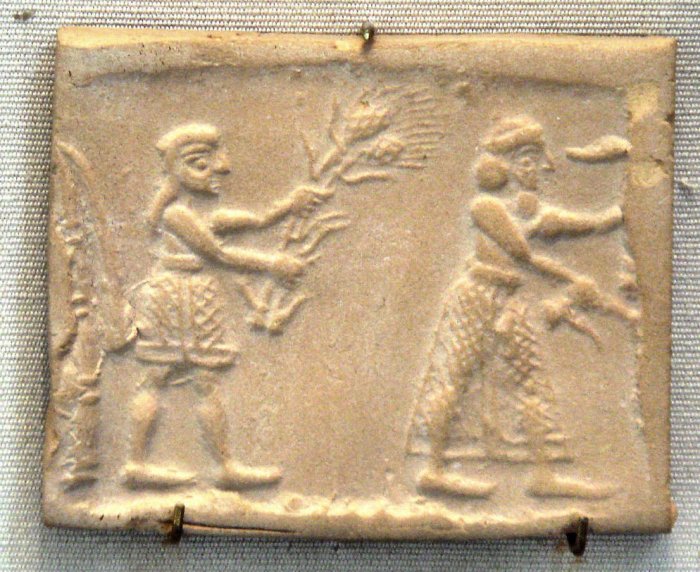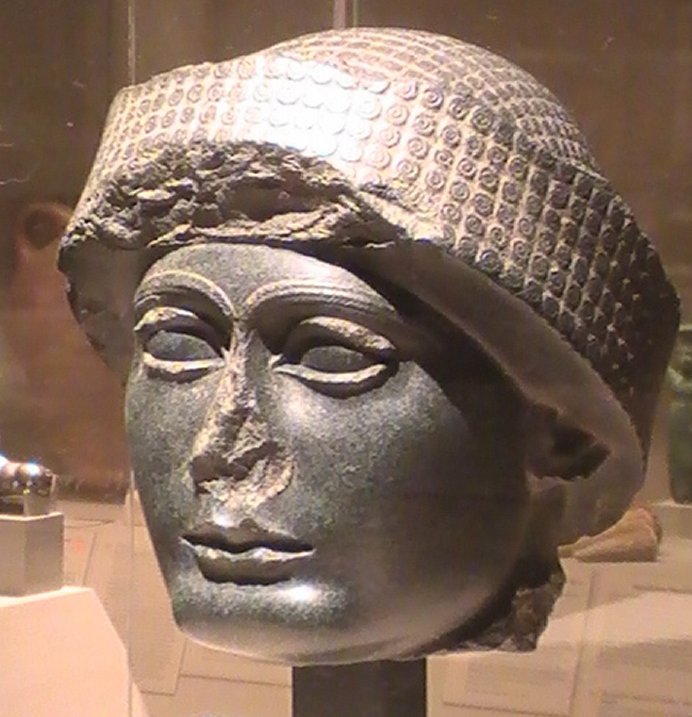Who Was The Sumerian Ensi?
A. Sutherland - AncientPages.com - Assyriologists have identified around twenty central provinces, and much we know today about Sumer originates from archives related to the sites of Girsu (Tello), Umma, Ur, Nippur, and Puzriš-Dagan (Drehem, a suburb of Nippur).
Sumerian cylinder seal impression dating to c. 3200 BC, showing an ensi and his acolyte feeding a sacred herd. Image credit: PHGCOM - CC BY-SA 4.0
Especially the collections from Umma and Girsu-Lagash are practically the only surviving provincial archives from the times of the Third Dynasty from Ur, which can serve as the basis for the study of local power structures, including the position of ensi.
A two-headed power controlled these provinces: one of them was a civil governor, ensi, who directed the administration and the sector of the temples and represented the highest judicial authority of the province.
The other was a post of the military governor (sagina) of Ur, a position which may have been a promising starting point for a career. The sagina reported directly to the authority of the king or the grand vizier. It was, therefore, independent of ensi.
However, the functioning of the empire's peripheries is less well known.
Ensi Managed The Community In Time Of Peace And War
The titles of king-priest en and king-commander of Lugal were adopted by the rulers of the main Sumerian cities, which ruled over larger, loosely integrated organizational territories.
In the Old Sumerian Period, divided into the Pre-dynastic Period (3000 BC to 2800 BC) and Early Dynastic Period (2800 BC to 2340 BC), the term ensi was one of the titles of independent Sumerian city-rulers. They held most political power in Sumerian city-states during the Uruk period (c.4100-2900 BC).
The ensi title meant "head of agricultural work" and originally referred to the coupling manager belonging to the commune. However, since the donkeys that were harnessed to the plow also pulled carts going to war, ensi could, therefore, also manage the community during the war or some important public tasks.
Head of Gudea in polished diorite, reign of Gudea (Boston Museum of Fine Arts). Image credit: Kkhemet - CC BY-SA 4.0
The title describing the city's independent ruler was widespread only in the 3rd millennium BC. At the end of this millennium, during the reign of the 3rd dynasty of Ur, ensi was exclusively the province administrator, who was on behalf of King Ur.
In the later Sumerian period, an ensí was subordinate to a lugal. Nevertheless, even the powerful rulers of the Second Dynasty of Lagash (c. 2100 BCE), such as Gudea were satisfied with the title 'ensí.'
Gudea - the King-Priest of the Sumerian city of Lagash, located in southeast Mesopotamia - was one of them. He possessed significant influence in Sumer during his 20-year-long reign. He chose the title of ensi (town-king or governor), instead of the title 'lugal.'
From the Old Akkadian period (the time of Sargon the Great), the term 'ensi' meant only a province governor subordinate to the king. In later eras, it retained the same meaning, including the Babylonian state.
In the city-state of Ashur, the hereditary ruler bore the Akkadian language version of the title ensí, while the patron deity was regarded as (šarrum - the Akkadian for "king."
Ensi – A Dignity Of Sumerian Temple
The highest dignity of the Sumerian temple city was the 'Ensi.' Originally, ensi probably meant a high priest whose powers included supervision over the construction of the temple.
He was also a worldly ruler, chief priest, chief military officer, and prominent, the earthly representation of the city god. He had full legislative, military, administrative, and judicial power on his territory.
If the local prince was able to bring under domination other city-states as well, he became 'lugal' (or 'great man/ruler') because his supremacy began to encompass a more extensive territory; he was called 'lugal,' translated as "great man." He ruled on behalf of the local god and headed the priests forming the ruling elite. If a "center of power" comprised several cities, the leading city prince (or "ensi") was responsible for the title "Lugal."
Ensi was considered chosen by the gods and possessed absolute power; however, it was more of an "absolutist system" than a system based on religious values. When the city prince lost the favor of the various gods - symbolized by catastrophes including incursions by enemies, illnesses, and natural events), he was quickly replaced by another "chosen one," who was probably recruited from the "Assembly of Elders."
A woman could not obtain this title but still hold a high position within the temple. In this respect, the Sumerians were somewhat progressive people. Each Sumerian city had a temple dedicated to its guardian deity and would either be governed by an ensi or a lugal.
Written by – A. Sutherland - AncientPages.com Senior Staff Writer
Updated on March 4, 2023
Copyright © AncientPages.com All rights reserved. This material may not be published, broadcast, rewritten or redistributed in whole or part without the express written permission of AncientPages.com
Expand for referencesReferences:
Samuel Noah Kramer, History Begins at Sumer
Gary A.Thomson, First Writers - The Sumerians: They Wrote on Clay
More From Ancient Pages
-
 Ancient Celtic Necropolis With Magnificent Swords And Artifacts But No Human Remains Discovered
Archaeology | May 7, 2025
Ancient Celtic Necropolis With Magnificent Swords And Artifacts But No Human Remains Discovered
Archaeology | May 7, 2025 -
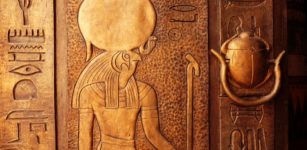 Sun God Ra Was Venerated In Every Age Of Ancient Egypt’s Long Dynastic History
Egyptian Mythology | May 3, 2021
Sun God Ra Was Venerated In Every Age Of Ancient Egypt’s Long Dynastic History
Egyptian Mythology | May 3, 2021 -
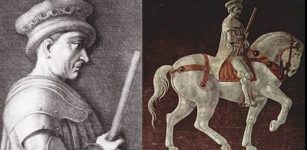 John Hawkwood ‘John Sharp’: Feared, English Mercenary And His White Company In 14th Century Italy
Featured Stories | Jun 20, 2020
John Hawkwood ‘John Sharp’: Feared, English Mercenary And His White Company In 14th Century Italy
Featured Stories | Jun 20, 2020 -
 Ancient Bone Reveals Syphilis May Have Originated In The Americas – Columbus Theory Questioned By Scientists
Archaeology | Dec 20, 2024
Ancient Bone Reveals Syphilis May Have Originated In The Americas – Columbus Theory Questioned By Scientists
Archaeology | Dec 20, 2024 -
 Forgotten Notebook Reveals Da Vinci Understood Gravitiy Long Before Newton
Ancient Technology | Feb 22, 2023
Forgotten Notebook Reveals Da Vinci Understood Gravitiy Long Before Newton
Ancient Technology | Feb 22, 2023 -
 Mysterious Deaths Around Empress Cixi – Cruel Tyrant Or Victim Of Propaganda?
Featured Stories | Apr 9, 2018
Mysterious Deaths Around Empress Cixi – Cruel Tyrant Or Victim Of Propaganda?
Featured Stories | Apr 9, 2018 -
 Day Of The Dead: From Aztec Goddess Worship To Modern Mexican Celebration
Ancient Traditions And Customs | Oct 30, 2019
Day Of The Dead: From Aztec Goddess Worship To Modern Mexican Celebration
Ancient Traditions And Customs | Oct 30, 2019 -
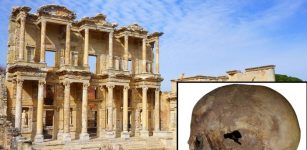 Mystery Of The Ancient Skull Found In Ephesus Solved – It Did Not Belong To Arsinoë IV, Cleopatra’s Sister
Archaeology | Jan 10, 2025
Mystery Of The Ancient Skull Found In Ephesus Solved – It Did Not Belong To Arsinoë IV, Cleopatra’s Sister
Archaeology | Jan 10, 2025 -
 Earliest Evidence Of Flip Flops In The Middle Stone Age
Archaeology | Oct 27, 2023
Earliest Evidence Of Flip Flops In The Middle Stone Age
Archaeology | Oct 27, 2023 -
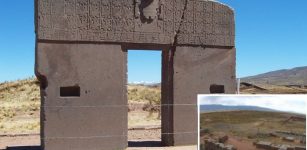 Underground City And Pyramid Discovered At Tiahuanaco, Bolivia
Archaeology | Aug 3, 2018
Underground City And Pyramid Discovered At Tiahuanaco, Bolivia
Archaeology | Aug 3, 2018 -
 Gilmerton Cove: Mysterious Cave System Still Keeps Its Centuries-Old Secrets
Featured Stories | Nov 27, 2021
Gilmerton Cove: Mysterious Cave System Still Keeps Its Centuries-Old Secrets
Featured Stories | Nov 27, 2021 -
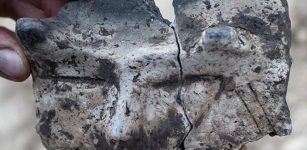 Unusual 7,000-Year-Old Jar Decorated With A Horned Face Found In Poland
Archaeology | Sep 3, 2020
Unusual 7,000-Year-Old Jar Decorated With A Horned Face Found In Poland
Archaeology | Sep 3, 2020 -
 Jedek: Previously Unidentified Language Found By Swedish Linguists In in Southeast Asia
Linguistic Discoveries | Feb 9, 2018
Jedek: Previously Unidentified Language Found By Swedish Linguists In in Southeast Asia
Linguistic Discoveries | Feb 9, 2018 -
 Crusader-Era Sword Discovered At Previously Unknown Burial Site In Finland
Archaeology | Oct 16, 2023
Crusader-Era Sword Discovered At Previously Unknown Burial Site In Finland
Archaeology | Oct 16, 2023 -
 Childhood Home Of Jesus May Have Been Found Underneath The Sisters Of Nazareth Convent
Archaeology | Nov 24, 2020
Childhood Home Of Jesus May Have Been Found Underneath The Sisters Of Nazareth Convent
Archaeology | Nov 24, 2020 -
 9,600-Year-Old Permament Settlement And Daily Tools Discovered In Turkey
Archaeology | Sep 2, 2022
9,600-Year-Old Permament Settlement And Daily Tools Discovered In Turkey
Archaeology | Sep 2, 2022 -
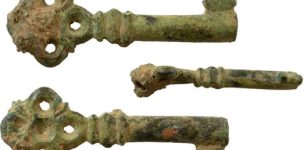 Intriguing Beautiful Medieval Key Discovered In Claverham Village, UK
Artifacts | Oct 10, 2023
Intriguing Beautiful Medieval Key Discovered In Claverham Village, UK
Artifacts | Oct 10, 2023 -
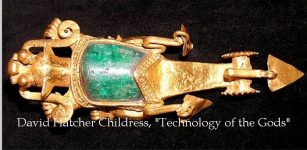 Prehistoric Heavy Machinery Of The Ancient Times Or A Piece Of Jewelry?
Ancient Technology | Sep 12, 2018
Prehistoric Heavy Machinery Of The Ancient Times Or A Piece Of Jewelry?
Ancient Technology | Sep 12, 2018 -
 Ancient DNA From Medieval Germany Reveals The True Story Of Ashkenazi Jews
Archaeology | Nov 28, 2022
Ancient DNA From Medieval Germany Reveals The True Story Of Ashkenazi Jews
Archaeology | Nov 28, 2022 -
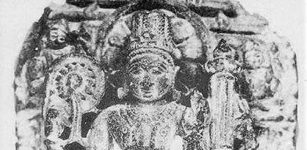 Dwarka – Pre-Harappan City That Could Rewrite The History Of The World
Civilizations | Aug 19, 2014
Dwarka – Pre-Harappan City That Could Rewrite The History Of The World
Civilizations | Aug 19, 2014

